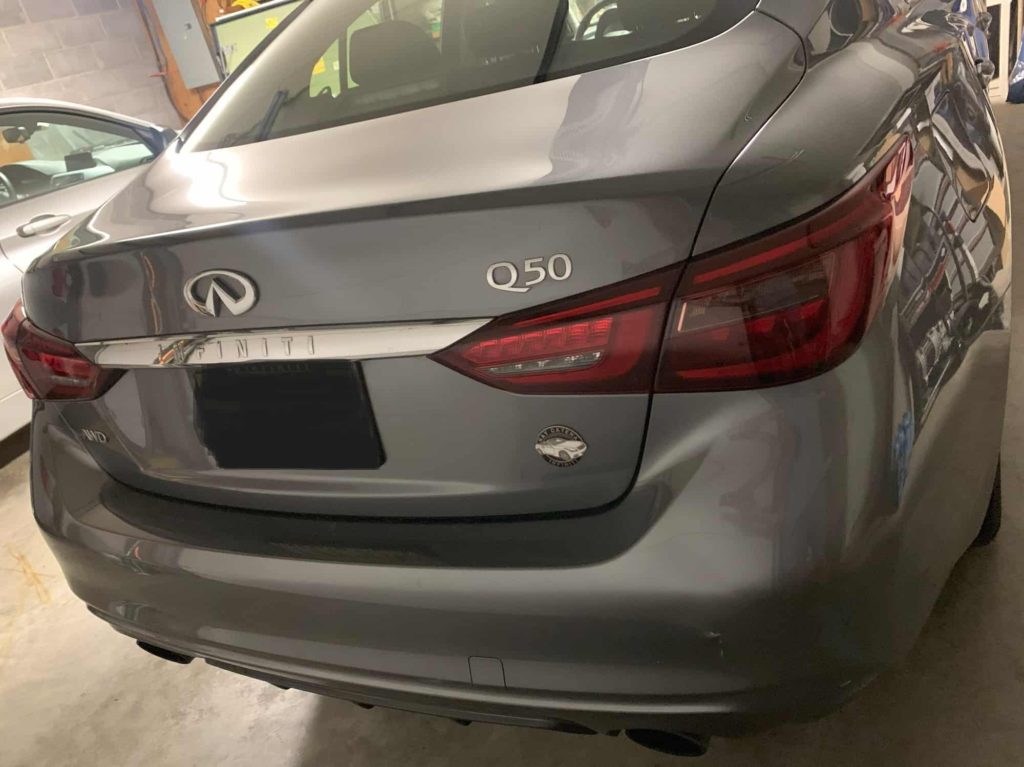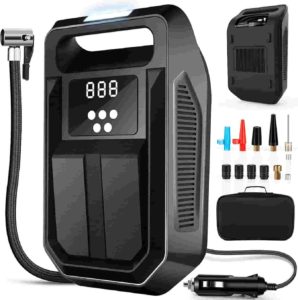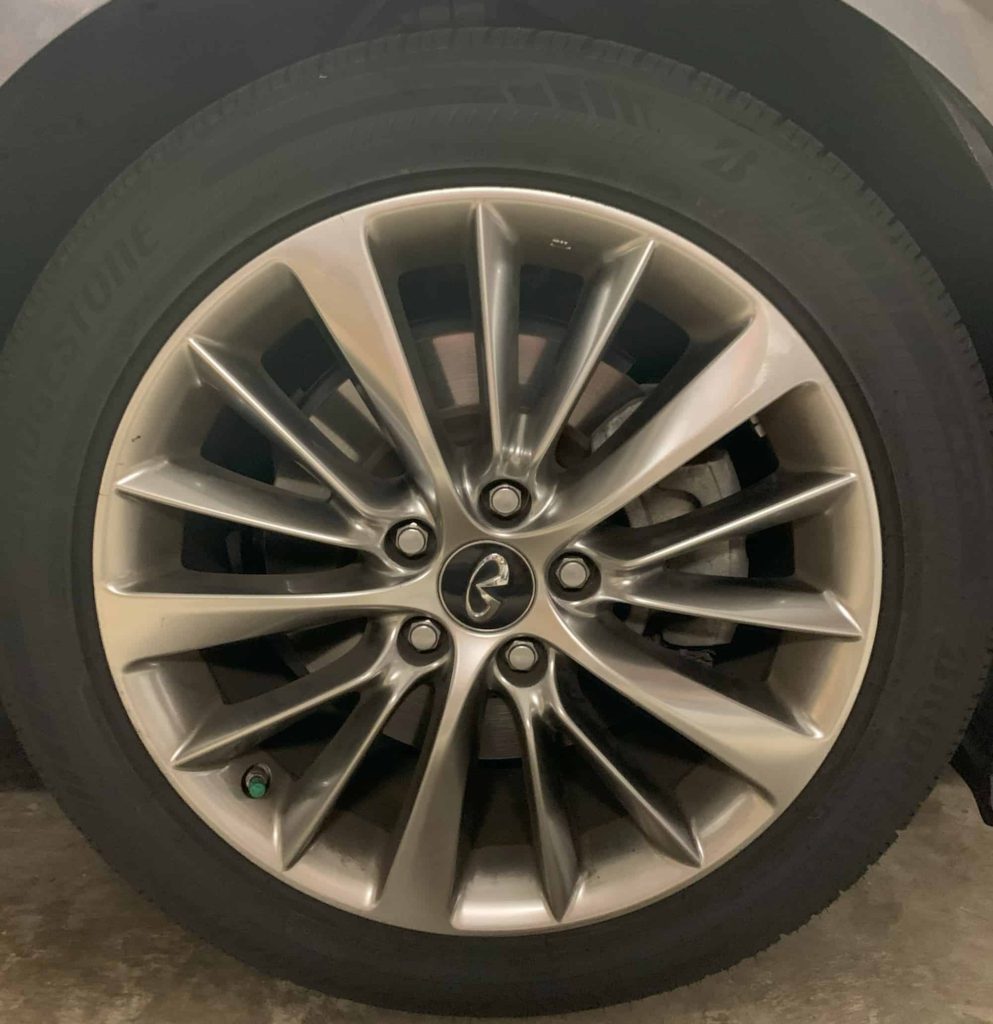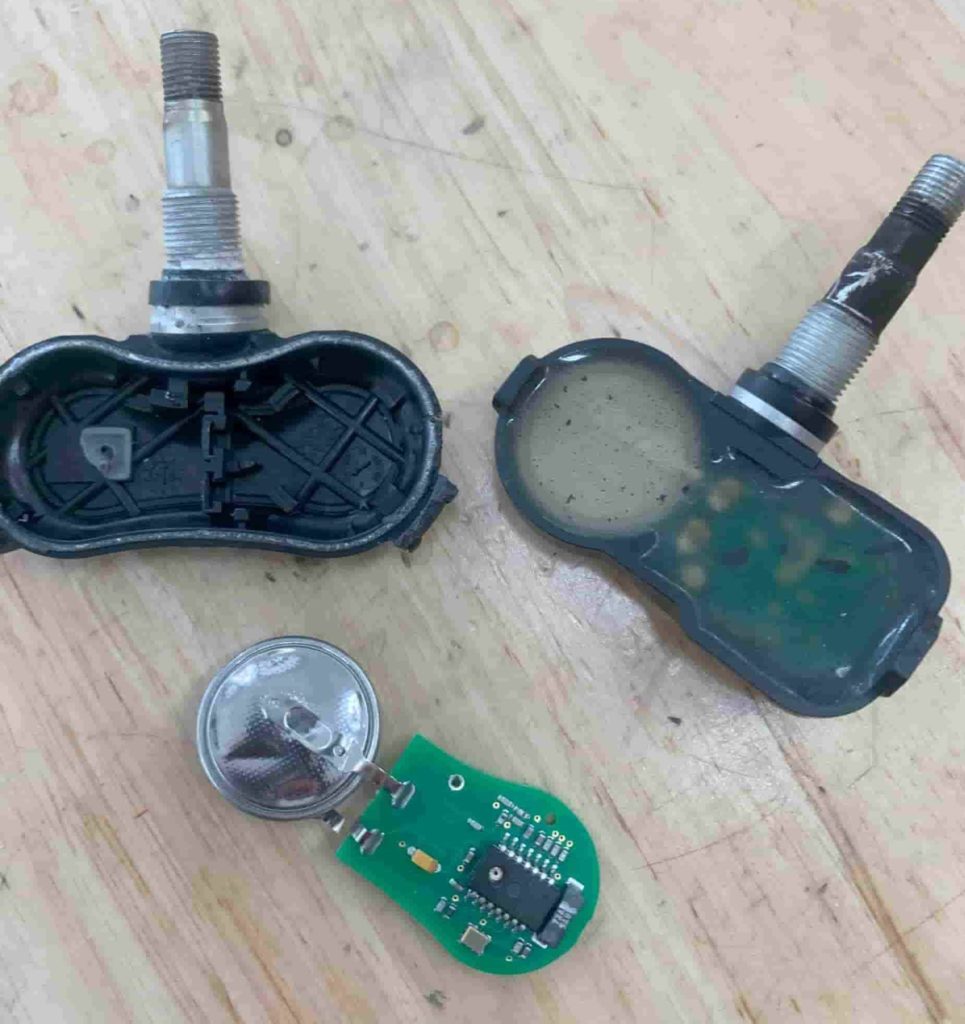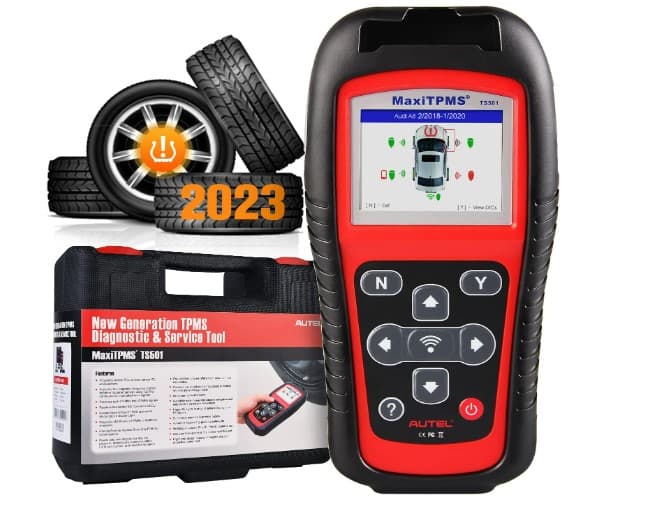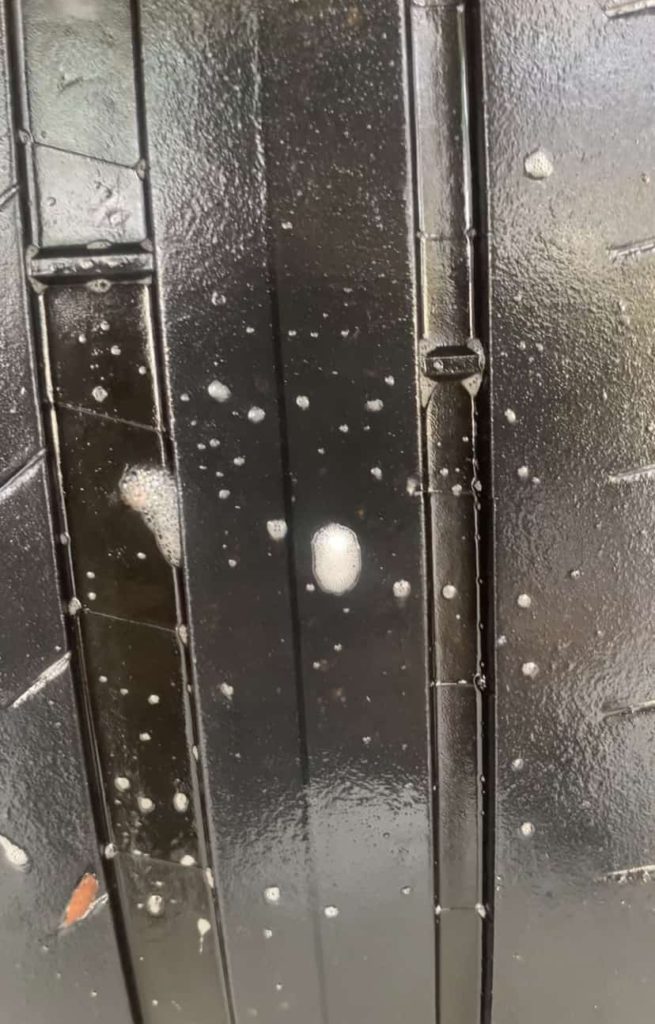What is the Infiniti Q50 Tire Pressure Monitoring System?
When the tire pressure light flickers on the dashboard, we often react with a sigh of, “not again!” It’s important to remember that the Tire Pressure Monitoring System (TPMS) in an Infiniti Q50 is a highly underrated safety feature that constantly monitors the air pressure within the tires, providing real-time updates to the driver through the vehicle’s dashboard display, allowing for prompt action if an irregularity is detected.
How to Reset Infiniti Q50 Tire Pressure Warning Light
How to Reset Non-U.S. Infiniti Q50 Tire Pressure Light
Park your infiniti Q50 in a safe and level space
Apply the parking brake and put the car in Park for automatic transmissions and in Neutral for Manual transmissions.
Adjust all 4 tires to the correct recommended COLD pressures.
Turn the ignition to the ON position (electricity on). Do not start the engine.
Push the MENU button.
Use the touch screen and select METER.
Use the touch screen and select TPMS SETTING.
Use the touch screen and select TYRE PRESSURE RESET.
After “RESET TPMS” appears, select OK.
After “TPMS RESET” appears select OK again.
Now drive the Q50 at speeds over 25 Mph for at least 10 minutes. Keep driving until the tire light goes out.
How to Reset U.S. Infiniti Q50 Tire Pressure Light
When the tire pressure light on your dashboard turns on, pull over slowly and check your tire pressure right away.
Figure out which tire is low or high on air and adjust the tire pressure accordingly. (The TPMS lets you know which tire is low on your screen by displaying the current tire pressures) As you add air to the tires the hazard indicator lights will start flashing.
Fill your tires to the exact recommended pressures. 35 Psi in the front and rear tires. I cannot emphasize this enough, accuracy is key. The horn of your car will beep once when the pressure reaches the correct level and the hazard indicators will stop flashing.
Drive your Infiniti Q50. Drive for 10 or 15 minutes at speeds over 25 Mph.
How to Turn Off the "Maintenance Tire" Light
Turn the car’s ignition to the ON position.
Select APP GARAGE on your touch screen.
Scroll down to MAINTENANCE NOTE.
Select MAINTENANCE.
Select TIRES/BRAKES.
Select TIRES.
Touch the plus button where it says SET DISTANCE and set it to 5000 miles.
Select RESET.
Select the BACK ARROW on the top left of the screen.
Select TIRE ROTATION, follow the same steps as we just went through.
Go back to the homepage of your touch screen.
Select SETTINGS.
Select METER.
Select TIRE and set it to 5000 miles.
Turn the Q50 power off and then start the car, this will turn off the tire maintenance light.
How Does the Infiniti Q50 TPMS Work?
The tire pressure monitoring system (TPMS) of an Infiniti Q50 is a sophisticated technology that plays a crucial role in maintaining safe and efficient driving conditions. Here’s a detailed explanation of how it works.
Tire Pressure Sensors
The first part of the system, and perhaps the most crucial, are the tire pressure sensors. These are located inside each tire and they are attached at the end of each tire valve stem. The primary job of these sensors is to constantly monitor the air pressure inside the tires. They work using a combination of pressure sensing technology (typically either capacitive, piezoresistive, or resonant frequency methods) and wireless data transmission technology (radio-frequency identification, or RFID).
Each sensor has a tiny integrated circuit that measures the tire pressure using the sensing method and then sends this information via a unique radio-frequency signal. These sensors are battery powered and are designed to last several years.
Antennae & TPMS Module
The antennae, positioned strategically within the vehicle, pick up the unique radio frequency signals sent by each sensor. These signals are then sent to the TPMS module (often a part of the larger Body Control Module (BCM)). This module decodes the signal from each sensor, converting it into data that can be interpreted by the vehicle’s computer. The TPMS module communicates with other parts of the vehicle, including the infotainment system display and the car’s on-board diagnostic system.
Infotainment System Display & OBD-II
The TPMS module, after decoding and processing the information received from the sensors, forwards this data to the infotainment system display. If the tire pressure in any of the tires falls below (or rises above) Infiniti’s recommended level, the system triggers a warning signal to be displayed on the infotainment screen. This warning is an illuminated yellow symbol resembling an exclamation mark inside a tire.
In the Infiniti Q50 the system can provide information about which tire is underinflated which allows you to address the issue directly. The warning light is designed to alert the driver at the earliest opportunity so that action can be taken before the low (or high) pressure causes any damage or leads to unsafe driving conditions.
At the same time the OBD-II system monitors the overall health and performance of the vehicle and records any TPMS issues as ‘fault codes’. These can be read using a specialized OBD-II scanner tool.
Understanding Tire Pressure
How Does the Weather Affect Tire Pressure?
Weather plays a significant role in affecting tire pressure due to the basic principles of thermodynamics. As temperatures drop in colder weather the air molecules inside your tires move slower and contract, resulting in lower tire pressure. Conversely, during warmer weather the air molecules speed up and expand, causing an increase in tire pressure. This is why you might notice your tire pressure monitoring system (TPMS) warning light on your Infiniti Q50 illuminate on a particularly cold morning, only for it to disappear as the day warms up. A general rule of thumb is that for every drop of 10 degrees Fahrenheit, your tire pressure will decrease by about 1 Psi.
How to Adjust Tire Pressure
Get a high-quality tire gauge.
Make sure to check the tire pressure when the tires are cold. “Cold” means your vehicle has been sitting for at least three hours or driven less than 1 mile in the past 3 hours.
Take off the valve cap from the tire valve stem.
Push the tire gauge firmly onto the valve to measure the pressure.
Compare the pressure reading with the recommended pressure on the tire information label. 35 Psi.
If the pressure is lower than the recommended pressure, add air.
If the pressure is too high, let out some air by pressing the metal stem in the center of the tire valve. You can use any object like a screwdriver to do this. Be gentle.
Recheck the tire pressure with the gauge.
Don’t forget to put the valve caps back on to prevent leaks and keep dirt and moisture out of the valve stem.
2023 Infiniti Q50 Tire Pressure
TIRE SIZE | FRONT PSI | REAR PSI |
245/40R19 | 35 | 35 |
245/40R19 | 35 | 35 |
SPARE TIRE | 60 | 60 |
Underinflated Tires
Increased Fuel Consumption: Underinflation leads to increased rolling resistance, making the sedan engine work harder to move, leading to higher fuel consumption.
Handling: Underinflated tires may negatively impact the Infiniti Q50’s handling and responsiveness. This can make the vehicle feel sluggish or unresponsive, especially when taking turns.
Increased Tire Wear: The increased friction and heat generated by underinflated tires can cause premature internal wear as well as uneven tire tread wear. This will lead to a reduced lifespan of your tires.
Increased Risk of Tire Damage: Underinflated tires are more susceptible to damage like punctures or impacts from potholes. They’re also more likely to suffer from tire blowouts, especially at high speeds or under heavy load.
What Can Cause the Tire Pressure Light to Turn On?
Changes in weather between seasons can affect your tire pressure. If the temperature drops, the pressure in your tires will go down too, and this can turn on the warning light.
Tire puncture or leak: If something sharp like a nail or screw on the road punctures a tire, it can cause the tire to lose air. This loss of air will turn on the warning light.
Faulty tire pressure sensor: Damaged or malfunctioning sensors may provide inaccurate readings, resulting in a false alert. The best way to find which sensor is faulty is to scan each sensor with a TPMS diagnostic tool.
Spare Tire: The Infiniti Q50 spare tire does not have a tire pressure sensor in it.
Valve stem issues: If the valve stem on a tire is damaged or leaking, it can slowly let air out of the tire. Over time, this loss of pressure will cause the tire pressure warning light to come on.
Tire damage: Impact from potholes or hitting a curb can cause structural damage like tire bubbles and bulges, leading to pressure loss.
Recent tire rotation or replacement: If the tires have been recently rotated or replaced, the TPMS may need recalibration to avoid false alerts. The vehicle’s computer could potentially think the front tires are in the rear and rear in the front after a rotation.
Wheel or rim issues: Damaged, corroded, or cracked wheels can lead to leaks and air pressure loss. This is very common with low profile tires because they offer less protection to the wheel.
Altitude changes: Going up or down in elevation can change the tire pressure and cause the tire pressure warning system (TPMS) to turn on. For every kilometer above sea level, an extra 1.5 Psi of pressure is needed in the tires.
Natural pressure loss: Tires lose air pressure over time due to temperature changes and permeation. Tire dry-rot will occur to tires that sit.
Electrical problems or software issues within the car’s TPMS system. Occasionally the system may have a software update from Infiniti.
Is it Safe to Drive the Infiniti Q50 with the Tire Light On?
Knowing why the tire warning light is on in your Infiniti Q50 is important for deciding if it’s safe to keep driving. Is the tire losing air because of a puncture? Is the tire losing air quickly or slowly? Maybe the problem isn’t with the tire but with the pressure sensors not working right? Even though there might be times when driving with the warning light on isn’t a big risk, it usually means there’s a serious safety problem. Figuring out what’s wrong will help you understand the real issue and decide if it’s safe to drive your Infiniti Q50 with the tire light on.
Why is the Tire Pressure Light Flashing?
The Infiniti Q50 has a special indicator in its tire pressure system that tells you if something is wrong with the system itself. It shows a yellow exclamation point, just like the warning light for low tire pressure. Here’s how you can tell them apart: if there’s a problem with the system, the light will blink for about a minute and then stay on. This blinking will happen every time you start your car until you fix the problem. When the tire light is blinking, the Infiniti Q50 can’t tell you the correct tire pressure. Remember, if the tire pressure light is blinking it means something is wrong with the system, not the air pressure in the tires.
What Can Cause a TPMS Malfunction?
Using non Infiniti wheels .
Using non Infiniti tire sizes.
If a window tint is installed, this can sometimes affect radio wave signals.
If there is lots of snow or ice on or around the tire valves.
If the tire pressure is extremely high.
If wheels without tire pressure sensors are installed on the car.
If new tire pressure sensors are installed without registering the new sensor IDs with the Q50’s receiver module/ECU.
Tire Pressure Sensor Batteries
The tire pressure sensors in the Infiniti Q50 each have a battery inside them, similar to what’s in key fobs or watches. These batteries are sealed in a plastic housing and directly connected to the sensor’s electronics, so you can’t replace them. When the battery gets low or runs out you have to replace the whole sensor. Different things can make the battery last longer or shorter, like how you drive, the weather, and how often and far you go on your trips. Typically, tire pressure sensor batteries last between 3 to 10 years or more.
Troubleshooting Tire Pressure Light Problems
If you’re having trouble turning off or resetting the tire pressure light on your Infiniti Q50, here are some solutions you might consider trying:
Solution 1: Does the Tire Light Come on When you Start the Car and Then Turn Off?
If the tire pressure light turns on when you start your Infiniti Q50 but goes off as you drive, it means that your tire pressure is just a little below what it should be. This can happen when your tires are cold in the morning (possibly at 30 Psi) and then get warmer as you drive. As the tires warm up, the pressure inside them increases (perhaps to 35 Psi, the recommended pressure), and this turns off the warning light. To fix this, make sure that each tire is inflated to the right pressure.
Solution 2: Is the Tire Losing Air?
The tire light usually comes on because of a loss of air pressure. If you fill the tire that has low pressure, and the light turns off or resets but then comes back on within minutes, hours, or days, it likely means there’s a leak.
Solution 3: Check the Battery Status of Each Tire Sensor
If you think you have a low battery or a TPMS malfunction in one of your tire pressure sensors and it’s making the tire pressure light come on, you can use a TPMS diagnostic tool to check each sensor. These tools are generally the same, so the process is the same no matter which one you have. To check each sensor, put the TPMS tool right in front of the valve stem and choose the “test” option on the tool. After you’ve done this for all 4 sensors, the tool will give you a report that shows the battery status for each one. If any sensor’s status is “low,” or doesn’t give a reading that means you need to replace it.
Solution 4: Erase the TPMS Diagnostic Trouble Codes Manually
If nothing else works and your tires aren’t losing air, you can try manually erasing the error codes from your Infiniti Q50’s Electronic Control Unit (ECU). To do this, you’ll need to disconnect the negative terminal of your car’s 12-volt battery. Leave it disconnected for a few minutes before putting it back. This action basically wipes out all the temporary fault codes in the ECU, including the one that’s causing the tire pressure warning light to come on. If the light turns off but then comes back on after doing this, it probably means there’s either a bad sensor or a leak in a tire.
Solution 5: Activate a Dormant Sensor
If the tire light is on but you’re sure your tires aren’t losing air, the sensor might just need a jump start. Start by figuring out which tire is causing the light to come on. Then, let out about 15 to 20 Psi from that tire, and then pump it back up to 10 Psi more than the recommended pressure (like 45 Psi if it’s supposed to be at 35 Psi). Next, take your Q50 for a short and slow drive on quiet roads for a few miles. Once you’re done park the vehicle and set the tire pressure back to the recommended 35 Psi. After you’ve completed these steps, drive your Infiniti Q50 again and the light should turn off.
Tire Leaks and Solutions
How to Find a Tire Leak
To find a tire leak in your Infiniti Q50, start by checking the air pressure in all four tires to see which one is low. Pump up the deflated tire to at least 35 Psi, since finding a leak in a completely flat tire can be tough. Then, take a spray bottle filled with a mix of water and soap (or a window cleaner like Windex) and spray it all over the tire, including the valve stem and bead seal. Once the tire is completely soaked, start looking for small bubbles on its surface. If there’s a leak, the air coming out will make tiny bubbles where the leak is. Remember, if the tire is losing air, there’s a leak somewhere and with some patience you’ll find it!
Are Tire Plugs Safe?
Yes, I’ve personally used tire plugs to fix hundreds of tires and I’ve found them to be very reliable. When installed properly, tire plugs are highly durable and can last for the entire lifespan of the tire.
Can I Disable the Infiniti Tire Pressure Monitoring System?
No, any tampering with any of the TPMS components will result in the tire pressure warning light to flash and then stay illuminated permanently.
Everything in this article is applicable to all Infiniti Q50 models and trims including the Infiniti Q50 LUXE, LUXE AWD, SENSORY, SENSORY AWD, RED SPORT 400, and RED SPORT 400 AWD.
Please note that this blog post contains Amazon affiliate links. This means that if you make a purchase through one of these links, we at TPMSRESET.COM may earn a small commission at no extra cost to you. We only recommend products that we personally use and believe in. Thank you for supporting us.

